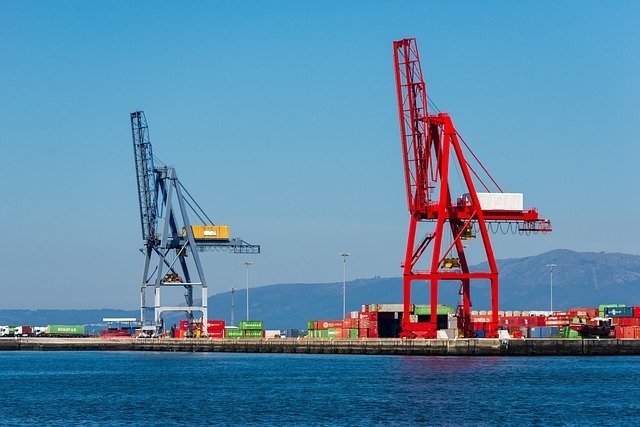Why Your Shipment Got Stuck in Customs — 5 Common Mistakes & How to Fix Them Fast
Customs delays can disrupt your supply chain, incur steep demurrage fees, and disappoint customers. For e-commerce sellers and importers in the US, UK, EU, Canada, and Australia, these holds are often caused by a handful of preventable errors. This guide outlines the five most frequent mistakes and provides a clear action plan to resolve them quickly and prevent future issues.
1. Incomplete or Inconsistent Paperwork
The Problem:
Vague product descriptions, missing HS codes, inconsistent weights, or absent importer tax IDs (EORI, EIN, ABN) are the top cause of customs holds. Authorities flag shipments that don’t match the transport manifest or lack essential information.
The Fix:
Use a Single Invoice Template: Mandate a commercial invoice template for all suppliers that includes: detailed product descriptions, HS codes, unit value, quantity, net/gross weight, country of origin, Incoterm, and the importer’s tax ID.
Include a Detailed Packing List: Attach a list that breaks down contents by box or pallet, including dimensions.
Pre-Send for Validation: Send documents to your customs broker 48-72 hours before shipment departure for pre-screening and electronic filing.
Client Case:
A UK beauty seller eliminated multi-day delays by enforcing a standardized invoice template and a 72-hour pre-submission rule, achieving same-day release for most shipments.
2. Wrong HS Code or Misclassification
The Problem:
Incorrect Harmonized System (HS) codes lead to tariff disputes, customs value reviews, and sudden duty reassessments. This adds days of delay and potential fines.
The Fix:
Maintain a Master List: Create and maintain a vetted list of HS codes for your top products.
Document Your Value Calculation: Ensure the declared customs value includes the price paid plus any assists, royalties, or commissions. Keep supplier contracts on file.
Get an Advance Ruling: For complex items, request a binding classification ruling from customs authorities for certainty.
Client Case:
An electronics importer stopped unexpected duty bills by properly documenting tooling costs (“assists”) and validating HS codes with a broker, ensuring smooth clearance.
3. Missing Tax IDs or IOSS Errors
The Problem:
Shipments are held when invoices lack the required importer tax ID for the destination market (EORI for EU/UK, IOSS for EU e-commerce, EIN for US, ABN for AU). Misconfigured VAT details cause refused deliveries.
The Fix:
Create an ID Registry: Keep a verified list of importer tax IDs for every market you serve.
Use IOSS for EU E-Commerce: For EU B2C sales under €150, register for IOSS and include the number on all declarations.
Be Transparent on Costs: Clearly state if shipping is DDP (duties paid) or DAP (duties unpaid) at checkout to manage customer expectations.
Client Case:
An EU seller drastically reduced refused parcels by registering for IOSS and adding the EORI field to all supplier invoices.
4. Product Compliance Issues
The Problem:
Regulated goods like batteries, cosmetics, and food require specific documentation. Missing safety sheets (MSDS), UN numbers, or prior notices (e.g., for the FDA) triggers physical inspections.
The Fix:
Create a Compliance Kit: For each regulated SKU, maintain a folder with all required certificates, test reports, and safety datasheets.
Pre-Alert Your Partners: Send these documents to your broker and carrier at the time of booking.
Avoid Mixing Goods: When possible, don’t ship regulated and non-regulated items in the same container to prevent entire shipments from being held.
Client Case:
A gadget brand ended holds on power banks by adding MSDS sheets and UN numbers to every shipment and pre-alerting their carrier, moving from physical inspections to quick document checks.
5. No Emergency Escalation Plan
The Problem:
Without a clear plan, teams waste days emailing while demurrage and storage fees stack up. A slow response turns a problem into a financial loss.
The Fix:
Implement a 4-Step Emergency SOP:
1-Hour Audit: Immediately verify all documents (invoice, HS code, B/L) for errors.
Escalate to Your Broker: Call them directly with all digital documents on hand.
Authorize Corrective Action: Submit a corrected entry, request an inspection slot, or for critical goods, authorize a partial air shipment.
Fix the Root Cause: Update supplier templates and procedures to prevent a repeat.
Client Case:
A parts supplier cut their recovery costs by 45% by implementing this playbook, which provided clear steps for their team to follow during a crisis.
Turn Customs From a Headache Into a Advantage
We help businesses navigate complex international customs rules every day. Our expertise, document templates, and broker network are designed to prevent these common mistakes and keep your shipments moving.
Get Your Free Rapid Recovery Plan
Don’t let a stuck shipment derail your operations.
Click here to schedule a free customs consultation.
Email your shipment details (origin, destination, product type, and HS code) to Hxin80377@gmail.com. We’ll send you a customized checklist and a recovery plan to resolve your issue fast.
Related Posts
Navigating EU CBAM: New Customs Documentation & Compliance for Your Imports
Navigating EU CBAM: New Customs Documentation & Compliance for Your…
How to Solve US Customs Clearance Delays & Avoid Penalties
How to Solve US Customs Clearance Delays & Avoid Penalties…
How to Handle Customs Duties & Taxes: A Practical Breakdown for Small-Batch Shippers
How to Handle Customs Duties & Taxes: A Practical Breakdown…
